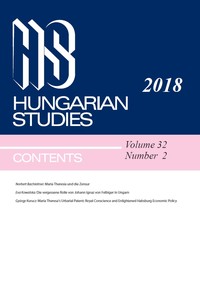“What Foreign Fashion Magazines are Not Able to Give”. The Politically Motivated Language of Fashion in the Magazine Nővilág in 1859–1860
“What Foreign Fashion Magazines are Not Able to Give”. The Politically Motivated Language of Fashion in the Magazine Nővilág in 1859–1860
Author(s): Judit KerpicsSubject(s): Cultural history, Media studies
Published by: Akadémiai Kiadó
Keywords: 19th century fashion; tradition; national attire; clothing; fashion magazine; female roles; history of press; Hungarian press; émigré literature; cultural transfer
Summary/Abstract: In the turn of the 1850’s and 1860’s a topic – which generated serious disputes in the reform era – flamed again in Hungary: it was the national clothing. With the slackening political rigour, the traditional Hungarian dress as a symbol of national togetherness was on the agenda yet again in Hungarian-language fashion magazines of Pest. The Nővilág [Woman’s World] edited by János Vajda aimed to work on women’s aesthetical education since the start of the magazine in 1857. The column named Original Fashion Report was written by the leader contributor of the magazine Júlia Jósika, who has been corresponded up to date French and Belgian fashion from Brussels. Popularity of her articles was unbroken until 1860. The Original Fashion Report in this name was published for the last time in the february of 1860; then the column was renamed, and of results of a slow process until the end of the year Júlia Jósika’s fashion reports frayed from the Nővilág. Her place was taken by a young writer with increasing publicity, Lenke Bajza, who made a stand for national fashion. She – likewise Júlia Jósika – worked for the magazine as fictionist and fashion professional. This change can be associated not with aesthetical but political decisions. Because of a delicate international political situation in the year 1859 Hungarian revisionists started to hope again in a new revolution for independence from Austria. With a press being stricktly supervised by the police, traditional Hungarian fashion became part of the language of national solidarity. In my paper I will confer the competition of French fashion and traditional Hungarian clothing through Júlia Jósika’s and Lenke Bajza’s confronting fashion reports and the alteration of Nővilág in the context of the politically charged alternative language of clothing.
- Issue Year: 33/2019
- Issue No: 2
- Page Range: 217-233
- Page Count: 17
- Language: English

